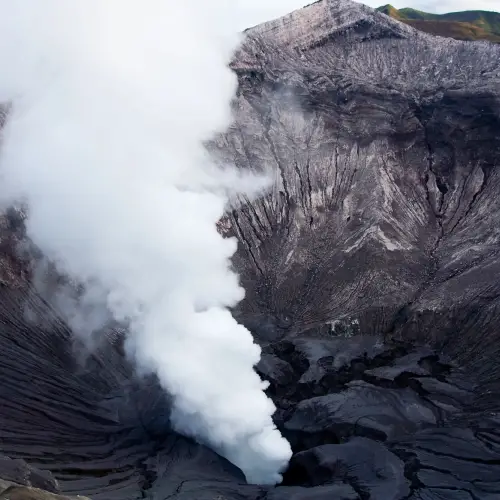
An adiabatic process is a phenomenon in which a system does not exchange heat with its surroundings. Instead of heat transfer, any change in the internal energy of the system is translated into work.
Although it is difficult to find completely adiabatic examples in nature, there are numerous practical cases where adiabatic approximations can be considered.
Below are some examples of adiabatic processes that occur in everyday life, industry and in certain natural phenomena.
1. Rapid compression in internal combustion engines
One of the most common examples of adiabatic processes in engineering is the rapid compression that occurs in an internal combustion engine, such as gasoline or diesel engines. During the engine's operating cycle, a mixture of air and fuel is rapidly compressed by the piston in the cylinder. This process is so rapid that there is not enough time for heat to be transferred between the gas and the cylinder walls, so the compression can be approximated as adiabatic.
Compression of the mixture increases the pressure and temperature of the gas without the input or output of heat. This increase in temperature is crucial because, in diesel engines, for example, it is what causes the fuel to self-ignite when injected into the combustion chamber. In gasoline engines, the spark generated by the spark plug ignites the mixture, completing the combustion cycle.
2. Expansion in a gas turbine
 Another example from the engineering field is the expansion of gases in a gas turbine, such as those used in aircraft or power plants. In a gas turbine, compressed air heated by combustion expands through the turbine blades, performing work by spinning the blades and generating power.
Another example from the engineering field is the expansion of gases in a gas turbine, such as those used in aircraft or power plants. In a gas turbine, compressed air heated by combustion expands through the turbine blades, performing work by spinning the blades and generating power.
This expansion process occurs very quickly, so heat transfer between the gases and the turbine blades is minimal. It can therefore be considered an adiabatic process. Adiabatic expansion allows for the efficient conversion of the gas's energy into mechanical work, which can then be used to move an aircraft or generate electricity.
3. The Carnot cycle
The Carnot cycle is a theoretical model that describes the most efficient cycle possible for a heat engine. Although it is an idealized concept, it helps to understand the limits of efficiency in heat engines. The Carnot cycle includes two adiabatic processes: an adiabatic expansion and an adiabatic compression.
During adiabatic expansion, the gas expands and does work on the surroundings without exchanging heat. As a result, the internal energy of the gas decreases, which lowers its temperature. In adiabatic compression, the gas is compressed without exchanging heat, which increases its temperature. These processes illustrate how, in an ideal cycle, it is possible to maximize efficiency through reversibility and the absence of heat losses.
Although no real engine works exactly like the Carnot cycle, this cycle provides a theoretical upper limit to the efficiency of any heat engine, and engineers use it as a reference to improve the design of engines and other thermal devices.
4. The adiabatic rise of air in the atmosphere
 A natural example of an adiabatic process is the rising of air in the Earth's atmosphere. As an air mass rises in the atmosphere, it experiences a decrease in pressure due to the decrease in atmospheric pressure at higher altitudes. As the pressure on the air mass decreases, it expands.
A natural example of an adiabatic process is the rising of air in the Earth's atmosphere. As an air mass rises in the atmosphere, it experiences a decrease in pressure due to the decrease in atmospheric pressure at higher altitudes. As the pressure on the air mass decreases, it expands.
The process of air expansion in this case can be approximated as adiabatic because heat transfer with the surroundings is minimal. As the air expands, its temperature decreases. This phenomenon is known as adiabatic cooling and is responsible for several meteorological processes, such as cloud formation and rain.
In the opposite case, when air descends in the atmosphere, it is compressed due to the increase in pressure. This compression causes an increase in air temperature, a phenomenon known as adiabatic heating. This effect is observed in phenomena such as the Föhn wind, where warm, dry air descends down the side of a mountain after having lost its humidity as it ascends and cools on the other side.
5. Rapid expansion in a refrigeration system
Refrigeration systems, such as refrigerators and air conditioners, also use adiabatic processes in their operation. In these systems, the refrigerant undergoes compression and expansion cycles to remove heat from a space and keep it cool.
When compressed refrigerant is released through an expansion valve, it expands rapidly and cools in a process that can be considered adiabatic due to the rapidity of the expansion. This rapid drop in temperature allows the refrigerant to absorb heat from the interior space of the refrigerator or from the environment to be cooled.
6. The discharge of a firearm
The firing of a firearm is another example of an adiabatic process that occurs in a very short time. When the trigger is pulled, the gunpowder or fuel contained in the cartridge burns, generating a rapid expansion of gases. This expansion occurs in such a short time interval that there is no significant heat transfer to the surroundings, making it an adiabatic process.
As the gases expand, they push the bullet through the barrel of the gun. During this process, the internal energy of the gases is converted into work to propel the bullet, with little heat loss.
The expansion process and the resulting propulsion of the projectile is an interesting example of how adiabatic thermodynamics plays a role in high-velocity, high-energy systems.
7. Controlled implosions in civil engineering
Controlled implosions, often used in civil engineering to demolish large buildings safely and efficiently, can also involve an adiabatic process. During a controlled explosion, explosives detonate, generating a rapid expansion of gases within a confined structure. The rapid increase in pressure of the gases is a process that can be adiabatic because the release of energy occurs in a fraction of a second.
The increase in pressure and subsequent collapse of the structure are due to the adiabatic expansion of gases within the structure.
8. Stellar phenomena: nebulae and stars in formation
 In the field of astrophysics, many adiabatic processes play a crucial role in the evolution of stars and other cosmic structures. One example is the formation of stars from nebulae, huge clouds of gas and dust in space.
In the field of astrophysics, many adiabatic processes play a crucial role in the evolution of stars and other cosmic structures. One example is the formation of stars from nebulae, huge clouds of gas and dust in space.
When a region of a nebula begins to collapse due to gravity, the gas is compressed. During this process, if the density is high enough, heat transfer outwards becomes negligible, and the collapse of the gas can be considered adiabatic. As the gas is compressed, its temperature increases, and this adiabatic compression continues until the conditions necessary for nuclear fusion are reached, giving rise to a new star.
This phenomenon also occurs at other stages of a star's life. For example, when a massive star collapses at the end of its life, the rapid compression of material in the core can be an adiabatic process leading to the formation of a supernova or a black hole.
9. Expansion and compression in pneumatic systems
Pneumatic systems, which use compressed air to perform mechanical work, are also a good example of adiabatic processes in industry. When compressed air in a tank is rapidly released through a valve to move a piston or operate a tool, the process can be approximated as adiabatic, since the expansion of the air occurs suddenly.
This phenomenon is similar in some ways to the expansion of gases in a turbine, but on a smaller scale. The compressed air does work without exchanging heat with the surroundings, and the temperature of the air decreases during expansion. In the compression of air for storage in a tank, a reverse adiabatic process occurs, where the temperature of the air increases due to rapid compression.
10. The piston experiment
A classic experiment performed in laboratories to demonstrate an adiabatic process is the so-called "piston experiment." In this experiment, gas is placed in a cylinder with a piston that can move up or down. When the piston is compressed rapidly, the gas inside increases in pressure and temperature without allowing heat to be transferred to the surroundings.
This experiment shows in a simple way how an adiabatic process works in a closed system. It is useful for demonstrating the relationship between pressure, volume and temperature, and for illustrating how the laws of thermodynamics are conserved in the absence of heat exchange.